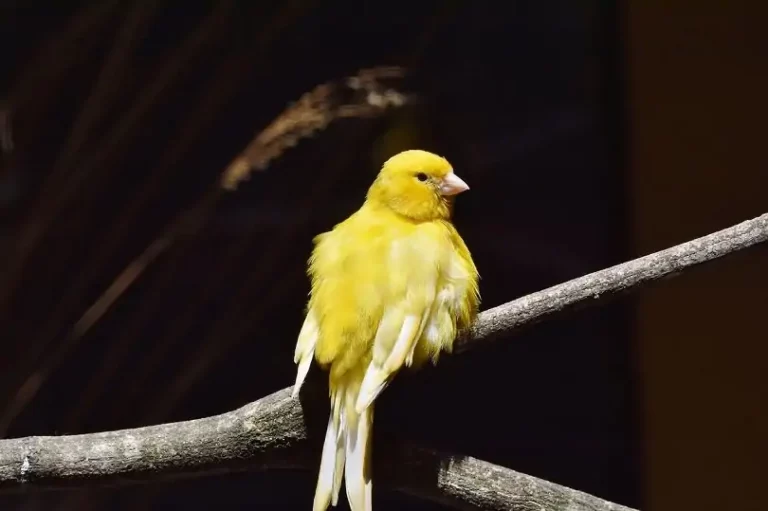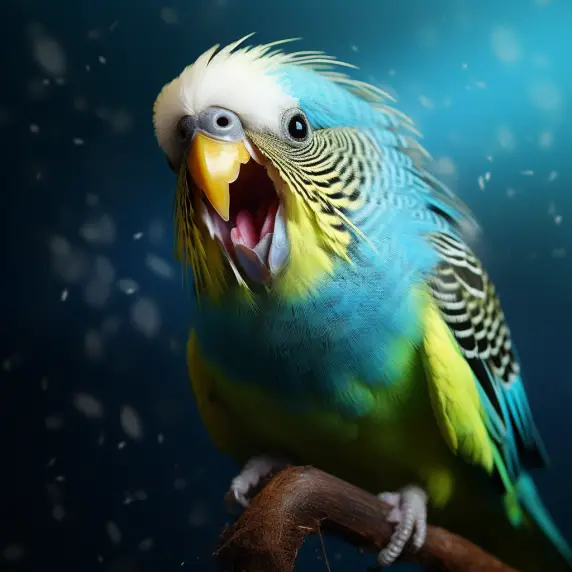Parakeets vs Budgies: Which is the Right Pet Bird for You?
When it comes to pet birds, two names often come up in conversations, causing a flurry of confusion – Parakeets and Budgies. But what’s the difference? Or is there any difference at all?
In the world of aviculture, the debate of Parakeets vs Budgies is a familiar one. While some may insist they are the same, others may argue that there are stark differences.
But rest assured, this blog post is here to put the confusion to rest once and for all. We will dive deep into the intricacies of these vibrant, chirpy creatures, understanding their attributes, comparing their characteristics, and finally determining which of these delightful birds might be the perfect fit for your home.
Prepare to embark on a colorful journey that celebrates diversity in the avian world. Let’s delve into the fascinating world of Parakeets and Budgies!
Decoding the Parakeet vs Budgie Debate: A Clarification
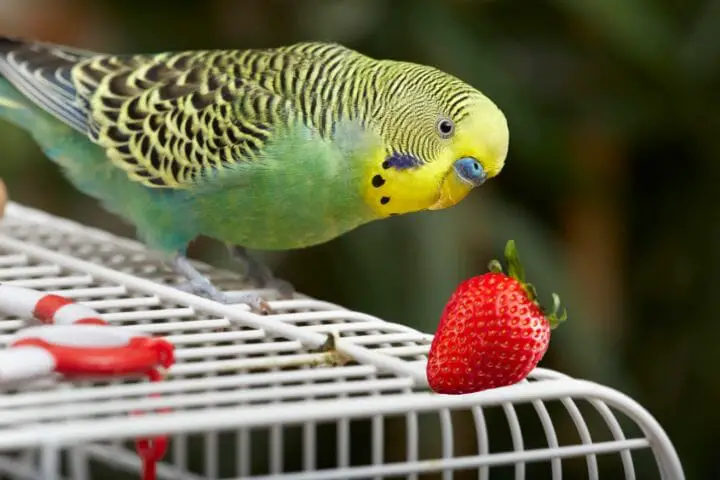
Let’s get one fact straight right off the bat: Budgies are indeed Parakeets. However, not all Parakeets are Budgies. Sound a bit puzzling? Allow me to clarify.
The term ‘Parakeet’ refers to a broad category of small to medium-sized species of parrot, characterized by long tail feathers. It’s more of a blanket term, encompassing hundreds of different species, each with their unique attributes and features.
In contrast, the term ‘Budgie’ – short for ‘Budgerigar’ – is a specific type of Parakeet native to Australia. Scientifically known as Melopsittacus undulatus, the Budgie is one of the most popular pet birds worldwide, known for its colorful plumage, cheerful disposition, and remarkable ability to mimic human speech.
The confusion often arises because in many regions, especially in the United States, the Budgie is commonly referred to as the ‘Parakeet’. While not technically incorrect, it doesn’t represent the wide diversity of birds that fall under the Parakeet category.
So, in essence, when we compare Budgies to Parakeets, we’re essentially comparing a specific species with a broad category of birds. It’s like comparing an apple (Budgie) to a fruit (Parakeets) – while an apple is a type of fruit, not all fruits are apples. The same principle applies to Budgies and Parakeets.
A Look at Budgie Lifespan: How Long Do These Vibrant Birds Live?
An important aspect to consider when choosing a pet bird is its expected lifespan. In this respect, Budgies stand out as an ideal choice for bird lovers who are willing to commit to long-term companionship.
Budgies, with proper care and nutrition, typically live between 5 to 8 years in captivity, although some have been known to live up to 20 years. This impressive lifespan makes Budgies one of the longer-lived species in the Parakeet family.
However, their lifespan is not just a testament to their robustness, but also a testament to the quality of care they receive.
Proper diet, regular exercise, social interaction, and preventive healthcare are key to ensuring your Budgie leads a long, healthy life. A diet of high-quality seed mix, supplemented with fresh fruits and vegetables, is essential.
Regular veterinary check-ups can help identify and treat potential health issues early. Mental stimulation through toys and interaction with their human family members also contributes to their overall well-being.
Remember, while the long lifespan of Budgies can be a rewarding experience, it also requires a significant commitment. The decision to bring a Budgie into your home should not be made lightly – they are not merely decorative pets, but sentient beings that demand time, care, and affection.
Understanding the Classification: Is it a Budgie or a Parakeet?
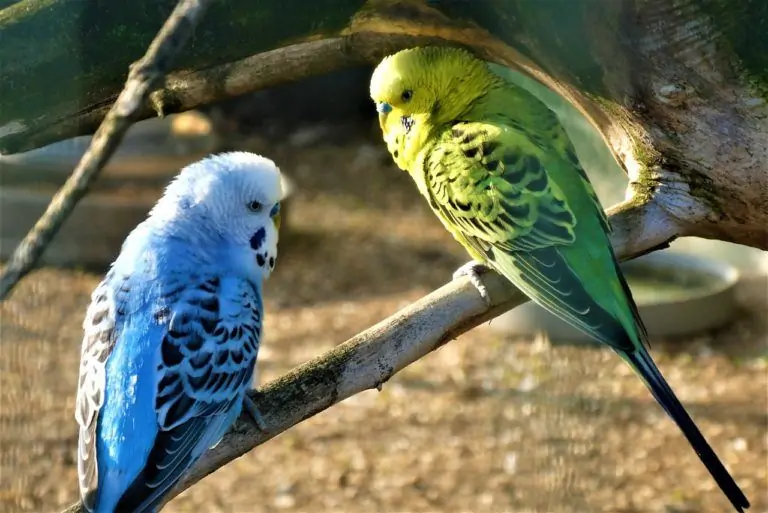
The Budgie vs Parakeet classification confusion is primarily due to regional language differences. As mentioned before, ‘Parakeet’ is a broad term used to classify a wide variety of small to medium-sized parrot species, characterized by their long tail feathers.
The term ‘Budgie’, on the other hand, is used to specifically refer to the Budgerigar, a type of parakeet native to Australia.
In the United States, the Budgerigar is often colloquially referred to as the ‘Parakeet’, which is where the confusion arises. In other parts of the world, especially in the UK and Australia, the term ‘Budgie’ is more commonly used.
The distinction becomes crucial when you consider that there are over 100 different species classified as parakeets, and they differ greatly in terms of size, color, temperament, and care needs.
For example, the Indian Ringneck Parakeet, another popular pet bird, is larger and has very different care requirements compared to the Budgie.
Thus, it’s essential to know the specific species of bird you’re getting, even though it might be broadly labeled as a ‘Parakeet’. By knowing exactly what bird you have, you can provide the appropriate care and environment for it to thrive.
Budgie vs Parakeet vs Lovebird: A Comparative Look
While Budgies and Parakeets often find themselves being compared due to naming confusion, another charming bird that comes into the mix when considering a pet bird is the Lovebird.
Lovebirds, native to Africa, are a different genus from Budgies and Parakeets, but their small size, bright colors, and endearing personality often make them a favorite choice for bird enthusiasts.
Let’s delve into the primary differences between the three.
Size and Appearance: Budgies, specifically, are generally smaller than most Lovebirds, averaging around 18cm in length, compared to Lovebirds who average around 15-17 cm. Parakeets, as a broad category, vary greatly in size. Lovebirds have a stockier build compared to the more slender Budgie. Both species display a vibrant array of colors in their plumage.
Lifespan: Budgies and Lovebirds have a similar lifespan, with both species living up to 10 years on average with proper care. However, the lifespan of different Parakeet species varies widely.
Temperament: Budgies are social, intelligent, and relatively easy to train. They are known for their ability to mimic human speech. Lovebirds are known for their affectionate nature, often forming strong bonds with their human caretakers or their bird partner. They’re not as known for their mimicking ability but are equally engaging pets.
Care Needs: Both Budgies and Lovebirds require a balanced diet, mental stimulation, and social interaction. However, Lovebirds are often more demanding in terms of attention and bonding time. As for Parakeets, the care needs differ significantly depending on the specific species.
Both Budgies and Lovebirds make fantastic pets, each with their unique charm. However, their care needs and characteristics differ, and potential bird owners should consider these factors before deciding on the right bird for their home.
Can Budgies Talk?

For many, one of the fascinating aspects of bird ownership is the potential to communicate with their feathery friends. So, the question arises, can Budgies talk? The answer is a resounding yes!
Budgerigars, or Budgies as they’re affectionately known, are among the most articulate of bird species and are renowned for their ability to mimic human speech. Interestingly, it’s usually the male Budgies that are more prone to talking than their female counterparts.
Budgies don’t just mimic sounds out of the blue; they are extremely social creatures who mimic the sounds around them as a way of fitting in with their flock. In a home setting, you, the pet parent, are their flock, and they will mimic your voice to communicate with you.
It’s essential to note, however, that not every Budgie will learn to talk, and that’s perfectly normal. It often depends on individual personality traits, the bird’s environment, and the time and effort put into training.
Budgies are intelligent birds, and even those who don’t speak can communicate effectively through various chirps, calls, and body language.
Training a Budgie to talk requires patience and consistency. The best way to teach your Budgie to mimic speech is by repeating simple words or phrases regularly and rewarding your bird for attempting to mimic the sounds.
Remember, every bird is unique, and learning to talk should be a fun and enriching experience for your Budgie, not a stressful obligation.
In summary, yes, Budgies can talk, and their mimicking ability adds an extra dash of charm to these vibrant and intelligent birds. But whether your Budgie turns out to be a chatterbox or prefers to communicate in traditional bird language, their companionship is undeniably enriching.
A Peek into their Origin and Natural Habitat
One of the key factors that influence the behaviors, dietary needs, and care requirements of a bird species is their origin and natural habitat. Budgies and Parakeets, although often confused, hail from different parts of the world, each with distinct habitats.
Budgerigars, or Budgies, are native to the vast landscapes of Australia. These sturdy little birds have adapted to survive in a range of conditions, from the arid desert outback to coastal shrubs and wooded areas.
In the wild, Budgies live in large flocks and are highly social creatures. This social nature is one of the reasons Budgies make such engaging and interactive pets. The harsh Australian environment has also made Budgies hardy and adaptable, able to thrive in various living conditions.
On the other hand, the term Parakeet refers to a broad group of small to medium-sized parrot species. Parakeets are found all over the world, including Asia, Australia, Africa, and Central and South America.
The natural habitat of Parakeets varies greatly depending on the specific species. For example, the Indian Ringneck Parakeet is native to Africa and South Asia and thrives in jungle environments, while the Monk Parakeet, often referred to as the Quaker Parrot, originates from temperate regions of Argentina.
Understanding the natural habitat of these birds is crucial to providing them with the right care in captivity. From their diet to their environmental enrichment and social needs, these aspects are all influenced by their origin.
By mimicking the aspects of their natural habitat and their social structure in the wild, you can ensure a fulfilling and healthy life for your Budgie or Parakeet.
Analyzing Physical Characteristics: Parakeets vs Budgies
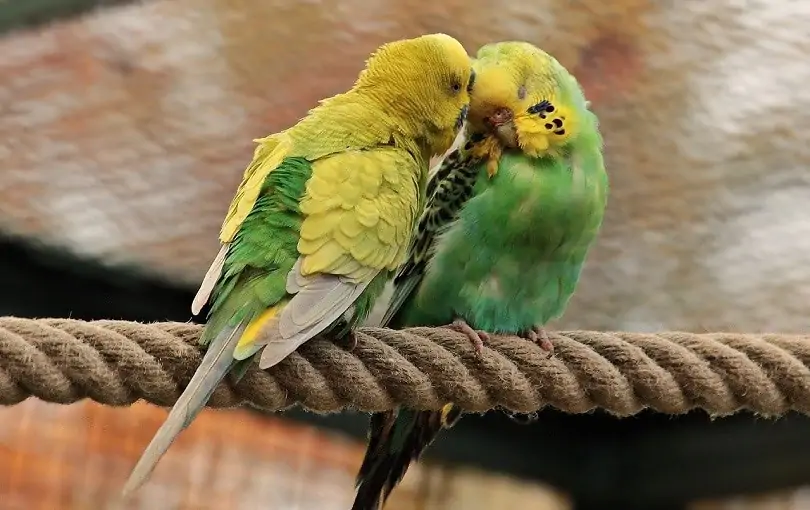
The physical characteristics of a bird are a source of constant fascination and delight. Parakeets and Budgies, despite their many similarities, exhibit some distinctive physical traits that set them apart.
Let’s start with Budgerigars, commonly known as Budgies. Budgies are small birds, typically around 18 cm (7 inches) in length from the beak to the tip of their tail feathers. They have a slender build and a slight hook at the end of their beak. Budgies are known for their vibrant, eye-catching plumage.
While the wild-type Budgie sports green plumage with black, wavy markings on the nape, back, and wings, breeders have developed many color mutations. Today, Budgies can be found in a rainbow of colors including blue, violet, white, yellow, and grey.
Parakeets, on the other hand, encompass a broad range of species, each with distinct physical attributes. For example, the Monk Parakeet is a larger bird, reaching up to 29 cm (11 inches) in length, and is known for its bright green body, grey chest, and mask-like pattern on its face.
Indian Ringneck Parakeets, another popular pet parakeet species, can grow up to 40 cm (16 inches) in length and are known for their striking ring of color around their necks.
So, while Budgies are typically smaller and exhibit a wider range of colors, the term Parakeet is an umbrella term encompassing various species each with its unique set of physical traits.
It’s crucial to note that, although often referred to as Parakeets, Budgies are in fact a type of Parakeet, highlighting the complexity and diversity within the Parakeet family.
Budgie vs Parrotlet: Making the Right Choice
Selecting the right pet bird requires careful consideration of various factors. Two popular choices, Budgies and Parrotlets, share similar attributes but also possess unique characteristics that can influence your decision. Let’s delve into a comparison of the Budgie vs Parrotlet to help you make an informed choice.
Budgies, also known as Budgerigars, are well-loved for their playful, sociable nature. They are relatively easy to train, making them an excellent choice for first-time bird owners. Budgies are also praised for their vocal abilities, and with patience and consistent training, they can learn to mimic sounds and even human speech.
As Budgies are highly social, they thrive in environments where they can interact frequently with their human family or bird companions.
Parrotlets, on the other hand, are the smallest of the new world parrot species, and while they may be diminutive in size, they certainly aren’t in personality. They are known for their bold, feisty nature. They are curious and energetic birds that need ample interaction and mental stimulation.
Parrotlets have a reputation for being slightly more independent than Budgies. They can be content playing with toys on their own, but they also need daily interaction and socialization with their owners.
The choice between a Budgie and a Parrotlet comes down to personal preference and your lifestyle. Both species require commitment and care, but the social, playful Budgie might be the right choice for someone with the time and desire to engage their pet in frequent interaction.
Meanwhile, a Parrotlet might be better suited to someone looking for a more independent but equally engaging avian companion.
Delving into their Behavior and Temperament
A key aspect to consider when choosing between Parakeets and Budgies is their behavior and temperament, as these traits significantly impact your interactions and bonding experience with your pet bird.
Budgies are lively, social birds who love to interact with their human companions. They enjoy a good chat and, with consistent training, they can even learn to mimic human speech. A budgie’s playful and energetic nature is sure to keep you entertained with their adorable antics and quirky behaviors.
They are also known to be quite affectionate once they build a bond with their human caregivers. However, they do require a significant amount of interaction and mental stimulation to keep them happy and healthy.
On the other side, Parakeets, as a broader category of birds, can have varying behaviors and temperaments depending on the specific species. Generally, they are also known to be friendly and sociable birds.
For instance, Indian Ringneck Parakeets are renowned for their intelligence and playful behavior. They can be trained to perform tricks and are often adept at mimicry. Monk Parakeets, another species, is also known for their sociable nature and affectionate behavior.
In a nutshell, both Budgies and Parakeets have friendly, engaging temperaments, but their behavioral nuances may vary based on individual personality and species characteristics. Understanding these differences can aid in choosing the pet bird that matches your lifestyle and pet ownership goals.
Parakeet vs Cockatiel: Weighing Your Options
As we journey further into the realm of pet birds, we find ourselves comparing two popular species, the Parakeet and Cockatiel. Each bird has a distinct set of characteristics, making them unique in their own right, and understanding these differences will help you make an informed decision on which bird might be the best fit for your home.
Parakeets are a diverse group of birds with varying sizes, colors, and temperaments. Budgies, the most common parakeets, are small, vibrant, and full of energy. They are sociable, love to interact with their owners, and with patience, they can learn to mimic sounds and words.
Their relatively smaller size requires less space and upkeep, which can make them a good option for potential bird owners with limited space or resources.
Cockatiels, native to Australia, are known for their crested feathers, round eyes, and long tail feathers. They are generally larger than most Parakeets, requiring more space in terms of a cage and flying area.
In terms of behavior, Cockatiels are typically friendly, affectionate, and relatively quieter compared to Parakeets, but they can still learn to mimic tunes and even whistle entire songs.
The decision between a Parakeet and Cockatiel ultimately comes down to your living situation, time, and resources. While both are friendly and engaging, the smaller and more sociable Parakeet may be more suitable for those with less space and more time for interaction.
On the other hand, the quieter and more independent Cockatiel may be a better match for someone looking for a more low-key companion.
Budgie vs Parakeet: Lifespan and Health
While Parakeets and Budgies both make delightful pets, potential owners should also consider their expected lifespan and health requirements. Understanding these aspects can ensure that you are fully prepared for a long-term commitment to your feathery friend.
Budgies, on average, have a lifespan of 5-10 years in captivity, with some individuals living even longer with optimum care. Budgies are generally robust birds, but they can be prone to a range of health issues such as obesity, respiratory infections, tumors, and avian polyoma.
Regular vet check-ups, a balanced diet, and ample exercise can go a long way in ensuring your Budgie leads a long, healthy life.
Parakeets, as a larger category encompassing many species, have varying lifespans. For instance, a Monk Parakeet can live for around 15-20 years, while an Indian Ringneck Parakeet can live up to 25 years or more.
The health issues they can encounter also vary widely, from Psittacine Beak and Feather Disease (PBFD) to egg binding in females. Regular vet care, along with a suitable diet and environment, can help maintain their health.
It’s important to remember that every bird species, including Budgies and Parakeets, needs a safe and stimulating environment, regular social interaction, and a balanced diet to thrive. Always ensure you have access to an avian vet and are prepared for the long-term commitment that comes with owning a pet bird.
Decoding their Communication and Vocal Abilities
One of the most captivating aspects of owning a bird is their unique communication and vocal abilities. Whether it’s the cheerful chatter of a Parakeet or the melodic tunes of a Budgie, understanding their vocalizations can provide a fascinating insight into their behaviors and emotions.
Budgies are known for their impressive mimicking abilities. They can learn a significant number of words, phrases, and even songs, given the right amount of interaction and training.
Their chatter is typically high-pitched and rapid. Budgies communicate their emotions through a combination of vocalizations, body language, and feather positioning. For instance, a budgie that’s happily chirping, fluffing its feathers, and bobbing its head is likely content and at ease.
Parakeets, encompassing a wide range of species, exhibit a diverse range of vocal abilities. Some parakeets, like the Indian Ringneck Parakeet, are known for their exceptional talking ability.
Others, like the Lineolated Parakeet, are quieter and more melodious. Regardless of their talking ability, parakeets use vocalizations and body language to express their emotions, needs, and warnings. Understanding these signals can enhance your relationship with your pet.
Regardless of whether you choose a Budgie or a different Parakeet species, patience, and consistent, positive interactions will encourage them to communicate more effectively. Keep in mind that not all birds will mimic human speech, and their individual personalities and preferences play a significant role in their vocal behaviors.
Nutritional Needs of Budgies and Parakeets
Budgies and Parakeets, just like us, require a balanced diet to thrive. Ensuring your pet bird receives the right nutrients is a vital part of their care and directly impacts their health, lifespan, and overall well-being.
When we talk about Budgies, their diet in the wild consists mainly of seeds and the occasional insects. However, in captivity, they require a more varied diet for optimal health. High-quality pellets should form the base of their diet, supplemented with a variety of fresh fruits and vegetables like apples, carrots, leafy greens, and berries.
Providing a cuttlebone in their cage can help meet their calcium needs and support beak health. Always avoid foods toxic to budgies, such as avocado, chocolate, and coffee.
On the other hand, the diet of Parakeets varies widely, reflecting the diversity of species under this umbrella term. While some parakeets also thrive on a diet based on high-quality pellets, others require specific foods to meet their nutritional needs.
For example, the Ringneck Parakeet enjoys a diet rich in fresh fruits and vegetables, seeds, and occasional protein from cooked meat or boiled eggs.
Regardless of the species, always ensure fresh water is available, and try to offer a range of foods to provide a balanced, varied diet. Remember, each bird is an individual, and what works for one might not work for another. Consulting with a vet can help tailor the perfect diet for your feathered friend’s specific needs.
Exercise and Enrichment: Keeping Your Bird Happy
Maintaining a fit and happy bird requires more than just proper nutrition. Both Budgies and Parakeets require ample exercise and mental stimulation to keep their spirits high and health in check.
In the wild, Budgies spend a significant portion of their day flying, foraging, and problem-solving. To mimic these natural behaviors in captivity, provide plenty of opportunities for flight within a safe and supervised environment.
An assortment of toys – swings, ladders, bells, and mirrors – can keep a Budgie entertained and mentally stimulated. Foraging toys can replicate the challenge of searching for food and can be a fun source of enrichment.
When it comes to Parakeets, their exercise and enrichment needs mirror those of Budgies due to their similar lifestyle in the wild. Time outside the cage for supervised flight is important for their physical health.
Likewise, a variety of toys can engage their minds and satisfy their natural curiosity. Puzzle toys, chew toys, and interactive games can provide hours of fun and mental stimulation.
Remember that interaction with their human family is also a crucial part of a pet bird’s enrichment. Spending quality time with your Budgie or Parakeet can strengthen your bond and contribute significantly to their overall happiness.
Just like us, each bird is unique, so it’s important to pay attention to their preferences and adapt their enrichment accordingly.
Are Budgies Good Pets? The Pros and Cons of Owning a Budgie
Deciding to bring a bird into your home is a significant decision, and it’s important to consider the pros and cons to determine if a Budgie is the right fit for your lifestyle.
Let’s start with the pros. Budgies are known for their friendly and sociable nature. They are highly intelligent birds that can learn to mimic human speech, whistle tunes, and even perform tricks, providing endless hours of entertainment. Their compact size makes them a good choice for those living in apartments or smaller homes.
In terms of care, Budgies are relatively low-maintenance compared to larger bird species. Their diet is simple and inexpensive, and their cages require less space. Furthermore, Budgies have a reasonably long lifespan for a small pet, often living up to 10-15 years with proper care.
On the flip side, owning a Budgie does come with responsibilities and potential challenges. They require daily interaction and mental stimulation, which means they’re not a good choice for people who aren’t home regularly or don’t have time to devote to their care. Budgies can also be noisy, particularly when they’re bored or seeking attention.
Budgies, like all birds, produce dander, which could be a problem for individuals with allergies. And, while their lifespan is a positive for many, it is also a commitment. You should be prepared to care for your Budgie for many years, as they can become quite bonded to their human caregivers.
Weighing the pros and cons can provide a clearer picture of what owning a Budgie involves, and help you decide whether it’s the right pet for you.
Deciding the Best Fit: Budgie or Parakeet for Your Home?
Deciding between a Budgie and a Parakeet may initially seem like a difficult task due to their similarities. However, a deeper understanding of their characteristics, needs, and personalities can guide you to the ideal feathered companion.
Firstly, it’s essential to remember that Budgie is a type of Parakeet. This means that all Budgies are Parakeets, but not all Parakeets are Budgies. When we speak of Parakeets in a general sense, we’re referring to a vast group of small to medium-sized species of parrots, which include over 100 different species.
Parakeets, other than Budgies, tend to have a wider range of size, color, and behavior variations. Some species may be quieter and more docile, while others can be more active and vocal. They can also vary greatly in terms of lifespan and dietary needs.
Budgies, on the other hand, are a specific breed known for their intelligence, sociability, and ability to mimic human speech. They are typically easy to care for, making them a good choice for first-time bird owners. However, they do require daily interaction and mental stimulation.
Ultimately, the decision between a Budgie or a different type of Parakeet will depend on your personal preferences, lifestyle, and the amount of time and energy you can devote to your new pet. Careful consideration of these factors will ensure a harmonious relationship between you and your new feathered friend.
Related:
Frequently Asked Questions
Are Budgies a type of Parakeet?
Yes, Budgies are indeed a type of Parakeet. The term ‘Parakeet’ refers to a broad category of small to medium-sized species of parrot, and Budgies (Budgerigars) fall under this category. In fact, they’re often known as ‘common parakeets.’
Can Budgies and Parakeets live together?
It depends on the species of Parakeet. Budgies can usually cohabitate with other Budgies peacefully, but mixing bird species can sometimes lead to conflict, particularly with larger or more dominant types of Parakeets.
Which is easier to train – a Budgie or a Parakeet?
Considering that Budgies are a type of Parakeet, it would be more accurate to compare Budgies with other Parakeet species. Generally, Budgies are quite intelligent and adaptable, making them relatively easy to train compared to some other types of Parakeets.
Are Budgies and Parakeets good for first-time bird owners?
Yes, both Budgies and many other types of Parakeets are often recommended for first-time bird owners due to their manageable size, sociability, and relatively easy care requirements.
Which is more vocal – a Budgie or a Parakeet?
Again, this depends on the species of Parakeet. Budgies are known for their chirping and ability to mimic human speech, but the volume and frequency of vocalizations can vary significantly among different Parakeet species.
Which is more sociable – a Budgie or a Parakeet?
Budgies are highly sociable birds that enjoy the company of their own kind and often bond with their human caretakers. Other types of Parakeets also display social behavior, but the level of sociability can vary from species to species.
How long do Budgies and Parakeets live as pets?
The lifespan of these birds can vary depending on species, diet, care, and genetics. Budgies typically live between 5 to 10 years, but some can live even longer with excellent care. Other Parakeets can live anywhere from 10 to 30 years or more, depending on the species.
Are there any specific dietary differences between Budgies and Parakeets?
Generally, Budgies and most Parakeets thrive on a diet of high-quality bird pellets, a variety of fresh fruits and vegetables, and a limited amount of seeds. However, the specific dietary needs can vary among different species of Parakeets, so it’s important to research the needs of the particular species you have or plan to get.
Are budgies the same as parakeets?
Yes and no. All budgies are parakeets, but not all parakeets are budgies. The term “parakeet” refers to a group of small to medium-sized species of parrots, one of which is the budgerigar, commonly known as “budgie”.
Can a parakeet talk?
Yes, many parakeets, including budgies, are capable of mimicking human speech and can be quite talkative with training and social interaction.
Are parakeets friendly?
Yes, generally parakeets, including budgies, are known to be friendly and social birds. They can form strong bonds with their human caretakers and enjoy interaction.
Q: Can parakeets live with budgies?
This largely depends on the individual birds and their temperament, but it’s generally possible for budgies and other types of parakeets to coexist peacefully in the same environment. However, careful monitoring is necessary to ensure compatibility and prevent any potential conflicts. Always consult with a vet or bird expert before introducing new birds to each other.
Final Thoughts
The world of birds is incredibly diverse and captivating. Whether you choose a Budgie or a Parakeet from another species, you’re welcoming a beautiful, intelligent, and potentially talkative new friend into your life.
Both Budgies and Parakeets have their unique quirks, features, and personalities. No matter which you opt for, you can look forward to a rewarding experience full of delightful chirps, colorful plumage, and engaging interactions.
Above all, the most important factor in this journey is not just about understanding the differences between these birds, but also embracing the responsibilities that come with pet ownership. This ensures a loving, healthy, and fulfilling life for your avian companion. Here’s to a fantastic journey of companionship in the fascinating world of Budgies and Parakeets!



